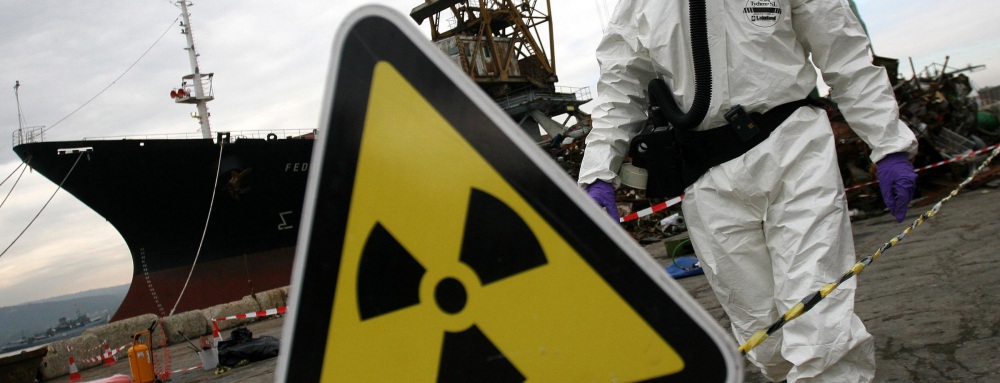
Laura S. H. Holgate Ambassador (ret.)
Vice President, Materials Risk Management
I am grateful to the government of Norway and to the individuals working under the skilled direction of Atle Konta Midttun and Styrkaar Hustveit, who put together this third HEU Symposium here in Oslo. This event reflects Norway’s history of leadership on this critical element of global nuclear security, and the tradition of building teams to go beyond talking to really “doing.”
I had the good fortune to attend the first HEU Symposium 12 years ago. Today, there are many differences from that first meeting, but there is a lot that remains the same.
On one hand, the number of countries holding HEU has decreased from 50 to just 21 in a matter of a couple decades. Today, here at this conference, we’ve heard about a huge amount of effort to get there and to continue to reduce HEU in civil use to the absolute minimum necessary. Everyone involved in this effort deserves tremendous credit for the time, energy, technical knowledge, resources, creativity, perseverance, and cooperation that has gotten us this far. As a result, we have three entire regions – South America, Central and Eastern Europe, and Southeast Asia – that no longer contain HEU.
Something that is the same is that I am once again representing the Nuclear Threat Initiative, as I did in 2006. NTI has been a pioneer in the HEU minimization effort, putting its own money and effort where its mouth was in 2002 with Project Vinca, one of the first post-9/11 HEU removal efforts. That project proved that the concept of multiple partners working together under the umbrella of the IAEA to accomplish a shared set of objectives was viable. This concept was soon adopted by the US Department of Energy and became the backbone of the work whose fruits we celebrate today. NTI has continued to carry out analysis, advocacy, and action in support of HEU minimization, and I am here in part to seek new ideas about how NTI can support this mission into the future.
Though considerable progress has been made in bolstering the security around these facilities, with the help of the Nuclear Security Summit process, challenges remain:
We have some new challenges, as well, that have come to the fore since that first Symposium:
Too often, these discussions get bogged down by myths, including:
None of these myths is true, and we need to stop making policies based on them.
Allow me to propose some possible steps to further HEU minimization (many of which have been included in recent NTI publications).
First and foremost, many here today in Oslo have referenced the Nuclear Security Summit process and pledges made in that context. We need to sustain the progress achieved during the NSS and address remaining gaps in the global nuclear security architecture. We can do this by building on the success and long-term viability of the Nuclear Security Contact Group. We need to work to expand the number of countries signing up to implement INFCIRC/912, regarding commitments on HEU minimization.
Though there is currently no ongoing Nuclear Security Summit process, member states should look to next year’s IAEA Nuclear Security Ministerial as an opportunity to continue to make public declarations and pledges regarding nuclear security progress, including on HEU minimization. We need to make the 2021 Review Conference of the Convention on Physical Protection robust and substantive and establish that such conferences will continue. Over time, this can become another venue for pledges and even for peer review, similar to the Convention on Nuclear Safety.
It is imperative we provide additional resources to IAEA for its nuclear security mission – both in the regular budget and in extrabudgetary contributions.
We should continue to promote international norms around minimization of HEU production and use with help of economic incentives. An example of this is building up expectations that all of the 21 remaining countries with civilian HEU should have regular Internatioal Physical Protection Aadvisory Service missions to review how well facilities with HEU are implementing IAEA nuclear security guidelines.
Second, we should aim to minimize and, where possible, eliminate stocks of weapons-usable nuclear materials and locations where they are located. Future efforts could focus on codifying HEU-free zones in regions that are already free of HEU, such as South America and Southeast Asia. Simultaneously, we must continue to support the eventual elimination of HEU globally, HEU reactor conversions, HEU repatriation efforts, and phasing out HEU for medical isotope production.
Next, we need to seek opportunities to re-invigorate nuclear security cooperation with Russia and other states. As the largest operator of HEU facilities in the world, Russia is, and will continue to be, critical to minimization efforts. Cooperation in this area should be based on principles of mutual benefit and equality, not unilateral assistance.
We also need to work with Russia to reverse their decision to start new production of HEU for export. In this same vein, we must engage with other states still operating HEU reactors, namely China, France, and Germany, to encourage conversion to LEU. The US needs to recommit to eventual conversion of our own HEU-based research reactors – a prospect weakened by recent steps in Congress to cut funding for such conversions.
Looking in to the future, we need to ensure that the norm of HEU minimization is maintained in the construction of new facilities. There is no question that the decision around reactor design is for each nation to make themselves, but no country should be undercutting the essential technical judgment reached 12 years ago: for new civilian reactors, there are virtually no research, isotope production, or energy requirements to use HEU, because new cores can be optimized to LEU fuel.
Having spent decades reversing the well-intentioned but misguided fuel decisions of Atoms for Peace at a great cost, we should not now commit the same error that will only recreate the risks that we have been reducing all these years.
Work being done at facilities such as the International Centers of Excellence for Research Reactors offer the chance to do experiments and materials testing at a few highly capable and well-managed facilities that still use HEU, so that countries don’t need to build their own HEU reactors. This is one example of a solution for balancing energy and research demands with minimizing security risks.
Domestically, national regulations should reflect the full spectrum of security risks posed by HEU, and exporters of HEU should insist on first-hand review of facilities that will use and store it fully meet INFCIRC/225 recommendations, as agreed by the Nuclear Suppliers Group.
Lastly, we must seek to ensure effective security of military HEU. Efforts should be undertaken to encourage states to declare and give assurances that their military materials are secured to the same or higher standards as those applied to comparable civilian nuclear materials. The US Navy should take more seriously the prospect of converting from HEU to LEU for surface and submarine propulsion, while still achieving the high performance and long core life that underpins current designs. Other countries considering naval propulsion programs should build on French experience with LEU cores.
At some point, however, we will likely reach the limits of HEU minimization. We need to understand that as long as weapons-usable materials exist, we will be responsible for their careful stewardship. This is why I have been advocating from a shift in language from “threat reduction” to “risk management”. Nuclear security is never done, and we need to regulate, budget, plan, and execute to high standards with that in mind.
Sign up for our newsletter to get the latest on nuclear and biological threats.
The NTI Index is recognized as the premier resource and tool for evaluating global nuclear and radiological security.
Nuclear and radiological security aims to ensure nuclear and other radioactive materials are secure from unauthorized access and theft, and that nuclear facilities are secure from sabotage.
The under-the-radar success story of U.S.-Chinese cooperation to convert reactors from HEU to LEU to reduce proliferation and nuclear terrorism risks. (CNS)

